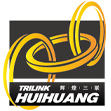Views: 0 Author: Site Editor Publish Time: 2024-07-29 Origin: Site








In order to ensure the longevity and optimal performance of your harvester bars, it is crucial to follow a regular maintenance routine. This article will provide you with valuable tips and insights on how to effectively maintain your harvester bars for long-lasting use. From regular cleaning and lubrication to implementing an inspection and maintenance schedule, these practices will contribute to the durability and efficiency of your harvester bars. By following these maintenance tips, you can maximize the lifespan of your equipment and minimize the risk of costly repairs or replacements. Whether you are a professional in the logging industry or a homeowner with a small-scale harvesting operation, the information presented in this article will help you enhance the performance and longevity of your harvester bars.
Regular cleaning and lubrication are essential for maintaining the efficiency and longevity of any machine, especially when it comes to a harvester bar. Harvester bars play a crucial role in the harvesting process, as they are responsible for cutting and gathering crops. Without proper care and maintenance, these bars can become dull, rusty, and inefficient, leading to decreased productivity and potential damage to the crops.
To ensure optimal performance, it is recommended to clean the harvester bar regularly. This can be done by removing any debris, dirt, or residue that may accumulate during the harvesting process. A soft brush or cloth can be used to gently scrub the bar, ensuring that all areas are clean. It is important to avoid using harsh chemicals or abrasive materials that can cause damage to the bar's surface.
After cleaning, lubricating the harvester bar is crucial to reduce friction and prevent rusting. Applying a high-quality lubricant specifically designed for harvester bars can help to keep the bar running smoothly and efficiently. The lubricant should be applied evenly along the entire length of the bar, ensuring that all moving parts are properly coated. This will not only enhance the performance of the harvester bar but also extend its lifespan.
Regular cleaning and lubrication not only prevent the accumulation of dirt and debris but also help to minimize the risk of corrosion. Harvester bars are often exposed to harsh environmental conditions, including moisture and various chemicals present in the crops. Without proper maintenance, these factors can lead to rusting and deterioration of the bar, ultimately affecting its cutting ability and overall performance.
By incorporating regular cleaning and lubrication into the maintenance routine, farmers and operators can ensure that their harvester bars continue to perform at their best. This not only improves the efficiency of the harvesting process but also reduces the need for costly repairs or replacements. Additionally, it contributes to the overall quality of the harvested crops, as a well-maintained harvester bar ensures clean and precise cuts.
Inspection and Maintenance Schedule
Regular inspection and maintenance are crucial for ensuring the optimal performance and longevity of any equipment, including a harvester bar. A harvester bar, being a key component of a harvester, plays a significant role in the efficient cutting and harvesting of timber. To maintain its efficiency and prevent any potential issues, it is essential to adhere to a well-planned inspection and maintenance schedule.
The first step in this schedule is to conduct a visual inspection of the harvester bar. This involves closely examining the bar for any signs of wear, damage, or defects. Look for any visible cracks, dents, or bends that could affect its performance. It is important to note that even minor damages can lead to significant problems if not addressed timely. Therefore, any issues discovered during the visual inspection should be addressed immediately.
After the visual inspection, it is essential to clean the harvester bar thoroughly. Remove any debris, sawdust, or resin that may have accumulated on the surface. This can be done using a brush or compressed air. Cleaning the bar not only helps in maintaining its appearance but also prevents the build-up of any harmful substances that may affect its functionality.
Once the bar is clean, it is time to lubricate it. Lubrication plays a vital role in reducing friction and heat generated during the cutting process. Apply a suitable lubricant to the bar, ensuring it reaches all the necessary parts. This will not only enhance the bar's performance but also extend its lifespan.
In addition to regular cleaning and lubrication, it is important to check the tension of the harvester bar. Proper tension is crucial for ensuring precise cutting and preventing any potential accidents. Use a tensioning tool to measure the tension and adjust it as necessary. It is recommended to follow the manufacturer's guidelines for the appropriate tension level.
Lastly, it is crucial to inspect and replace the harvester bar's chain regularly. The chain is directly linked to the bar and plays a vital role in the cutting process. Inspect the chain for any signs of wear, such as elongation or damaged links. If any issues are detected, replace the chain promptly to prevent any further damage to the harvester bar.
In conclusion, regular cleaning, lubrication, and maintenance are crucial for keeping harvester bars in optimal condition. By following a well-planned inspection and maintenance schedule, farmers and operators can enhance the performance and durability of their harvester bars, leading to increased productivity and improved crop quality. This includes regular visual inspections, cleaning, lubrication, tension checks, and chain replacement. By adhering to these maintenance practices, operators can maximize efficiency and minimize the risk of breakdowns or accidents. A well-maintained harvester bar not only improves productivity but also promotes safety in the forestry industry.
